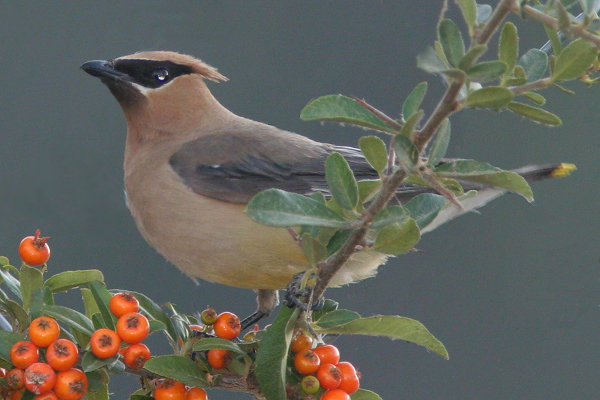
Date: 2005-09-12
Lens: Canon 300mm IS F4 + 1.4x II Converter

 Cedar Waxwing
Bombycilla cedrorum
Cedar Waxwing
Bombycilla cedrorum
 Description
Description
This elegant bird derives its name from the waxy red secretions on the tips of the secondaries. This waxy material is exuded from the feather shafts. The amount of red is age dependent, with older birds having more red.
Waxwings spend their time moving around in flocks from one berry crop to another. This highly social bird has been known to pass berries down a line until one eats it. Waxwings tend to nest late in the summer, when berries and fruits are abundant. Adults store berries in a throat pouch, called a crop, from which the berries are regurgitate into the mouths of the nestlings. Insects are also a part of their summer diet, which they catch in a flycatcher manner.
Pale brown head with crest. Pale yellow belly. Smooth color transition between head and belly. Black eyemask with white edges. Dark brown back. Dark gray wings with waxy red tips on secondaries. Dark gray-black tail with yellow band at tip. Juveniles have a grayer head and body with blurry streaks on underparts. Sexes similar. 6 to 8 inches in length.
Open woodlands, orchards, shrubs, and residential areas.
 Nesting
Nesting4-6 blue-gray eggs with dark brown and black spots. The eggs have a 10-16 day incubation period. Fledging occurs in 14-18 days. The nest is a bulky open cup made from twigs and grass; usually built in a tree.